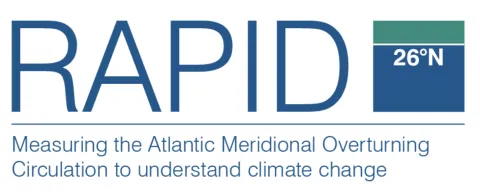Observing and understanding the changes in the AMOC is critically important for identifying the mechanisms of decadal climate variability and change, and for interannual-to-decadal climate prediction. Sustained observations are also necessary for assessing the possibility of future abrupt change in the AMOC similar to those seen in palaeoclimate records. Please see https://amoc.rapid.ac.uk for more information.
NOC people
RAPID



